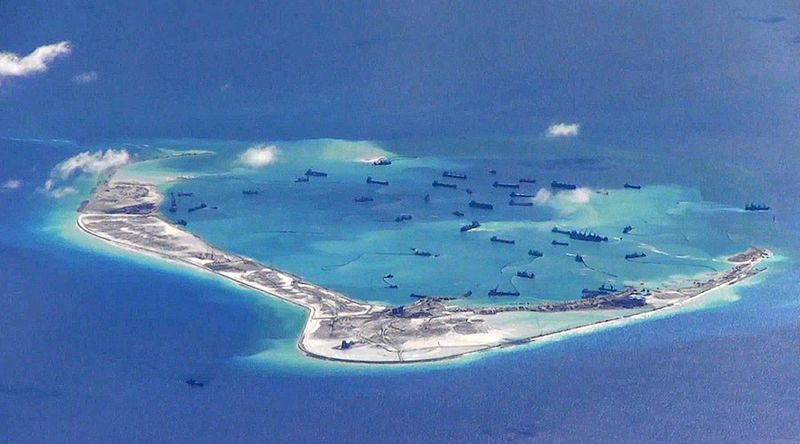


China, Taiwan, Vietnam, Philippines, Malaysia and Brunei are fighting over dominion of the Spratly Islands. Currently, the four countries excluding Brunei (Taiwan is equivalent to the People's Republic of China) each have effective control of some reefs and sandbar.
For Japan too, the territorial dispute of the Spratly Islands on the navigation route (sea lane) through which 80% of the imported oil passes is a very important issue. If there is a large armed conflict in the South China Sea or when free navigation is no longer accepted, the amount of oil that can be imported is greatly reduced, or the possibility of a huge blow to the Japanese economy due to the sharp rise in prices due to changes in routes it is because it is high.
This page explains about China that performs remarkable action such as large-scale landfill.
In addition, China calls the Spratly Islands, the Zhongsha Islands, the Paracel Islands and the Dongsa Islands collectively as the South China Sea Islands. China insists on its sovereignty.
The Spratly Islands are located in the southern part of the South China Sea.

From the table, we can see that this problem has occurred since the Second World War.
What is important here is an international assessment of this issue.
According to the judgment of the arbitral tribunal, since China insists on dominion in almost the entire South China Sea, the boundary line "Kudan Line" that we set independently has "no legal basis to assert historical rights" in international law.
Also, since artificial islands made by landfill in the Spratly Islands were originally all submerged under high tides, they are not "islands" but "rock" or "low tide altitude", and in the South China Sea every country has an exclusive economic zone it is not allowed to be accepted.
On the other hand, China insisted that judgment was invalid and did not need to be followed.
After that, China has been carrying out military exercises several times in the South China Sea.
 Difference between island, rock, low tide altitude and artificial island
Difference between island, rock, low tide altitude and artificial island
When these are satisfied, it becomes "island" and territorial waters, exclusive economic zones and continental shelves are recognized.
What is "rock"?An island where people cannot live. Only the territorial sea is recognized.
What is "low tide altitude"?Although it does not sink at low tide, it sinks at high tide, and territorial waters, exclusive economic zones, and continental shelves are not allowed.
What is "artificial island"?It is an artificially created land surrounded by water, not recognized as "island" under international law, territorial waters, exclusive economic zones and continental shelves are not allowed.
Difference between territorial waters, exclusive economic zone (EEZ), continental shelfAs far as the distance from the territory to the distance of 12 nautical miles (about 22 km), foreign ships have the right to navigate to the extent that they do not harm the safety. However, as sovereignty of Japan extends, if a foreign ship does fishing or smuggles without permission, you can arrest the captains etc. According to Japanese law.
What is "exclusive economic zone (EEZ)"?It is a range up to 200 nautical miles (about 370 km) from the territory, including territorial waters. Foreign vessels have the right to navigate to the extent that they do not harm the safety. However, regarding the resources under sea, underwater, ocean floor, and the ocean floor, Japanese law can be applied.
What is "continental shelf"?It is a range up to the distance of 350 nautical miles (about 650 km) from the territory, it is said to be "extension of the territory's nature", and it will not overlap or overlap the territory and EEZ, depending on the topography of the seabed. Foreign vessels have the right to navigate to the extent that they do not harm the safety. However, regarding the resources below the ocean floor / the ocean floor, Japanese law can be applied.
Why does China advance into the South China Sea? The following are considered for the reason.

Ocean power country(JPN call : Kaiyo Kyokoku)
It is one of the national goals of the Chinese government and was included at the 18th Chinese Communist Party convention held in November 2012. It is aimed to raise the maritime interests (ocean rights and benefits thereby).

Green Water Navy
It is the navy that mainly defends the territorial waters and does not possess military activity ability in waters far away from home country.
Blue Water Navy
Navy which possesses military activity ability in defense of territorial waters and remote waters from home country.

 Japan-Taiwan relations
Japan-Taiwan relations